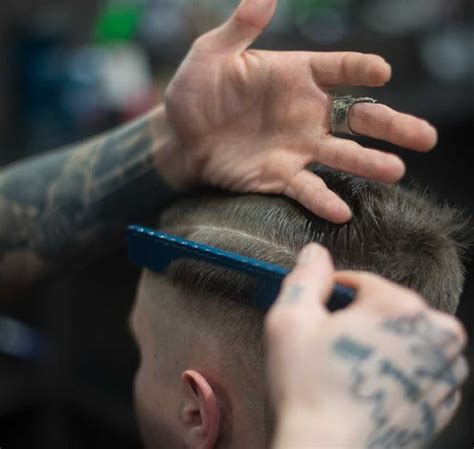Introduction

Hair loss is a common concern affecting millions of people worldwide. While surgical hair transplantation has been the traditional solution, non-surgical hair replacement methods have emerged as popular alternatives. These non-invasive techniques offer a wide range of options for restoring a full, healthy head of hair without the risks and downtime associated with surgery.
Types of Non-Surgical Hair Replacement
-
Wigs: Wigs are full headpieces that provide instant coverage for hair loss. They are available in various colors, textures, and lengths, allowing for customization to match individual needs.
-
Hairpieces: Hairpieces are smaller than wigs and designed to cover specific areas of hair loss, such as the crown or temples. They are attached using clips or adhesives.
-
Scalp Micropigmentation (SMP): SMP is a non-surgical procedure that creates the appearance of fuller hair by tattooing tiny dots of pigment onto the scalp.
-
Laser Hair Therapy (LHT): LHT uses low-level lasers to stimulate hair follicles, promoting hair growth and reducing hair loss.
-
Platelet-Rich Plasma (PRP) Injections: PRP injections involve extracting platelets from the patient’s blood and injecting them into the scalp, which promotes hair follicle growth.
Benefits of Non-Surgical Hair Replacement
- Immediate results: Wigs and hairpieces provide instant coverage for hair loss, boosting confidence and self-esteem.
- Customization: These methods offer a wide range of options to match hair color, texture, and style, ensuring a natural-looking result.
- Non-invasive: Non-surgical hair replacement techniques are minimally invasive, avoiding the risks and downtime associated with surgery.
- Cost-effective: Compared to hair transplantation, non-surgical methods are generally less expensive.
- Reversibility: Wigs and hairpieces can be removed or changed as desired, providing flexibility and control over hair appearance.
Who is a Good Candidate for Non-Surgical Hair Replacement?
Non-surgical hair replacement is suitable for individuals experiencing hair loss due to various factors, including:
- Alopecia areata
- Androgenetic alopecia (male-pattern baldness, female-pattern hair loss)
- Telogen effluvium
- Cancer treatments
- Thyroid issues
- Autoimmune diseases
Step-by-Step Approach to Non-Surgical Hair Replacement
- Consultation: Consult with a hair loss specialist to determine the cause of hair loss and discuss suitable non-surgical hair replacement options.
- Customization: If wigs or hairpieces are preferred, choose the appropriate color, texture, and style based on individual preferences.
- Fitting: For wigs and hairpieces, a fitting is required to ensure a secure and comfortable fit.
- Application: For wigs and hairpieces, follow the instructions for proper application and removal. For other methods, the procedure will be performed by a healthcare professional.
- Maintenance: Non-surgical hair replacement methods require ongoing maintenance, including cleaning, styling, or touch-ups.
Why Non-Surgical Hair Replacement Matters
Hair loss can have a profound impact on self-confidence, self-esteem, and overall well-being. Non-surgical hair replacement methods offer individuals a way to manage hair loss, regain confidence, and improve their quality of life.
How Non-Surgical Hair Replacement Benefits
- Increased confidence: Non-surgical hair replacement can boost self-confidence by restoring a youthful appearance and concealing areas of hair loss.
- Improved self-esteem: Regaining a full head of hair can help individuals feel more positive and self-assured about their appearance.
- Enhanced social interactions: Social anxiety and withdrawal can often accompany hair loss. Non-surgical hair replacement empowers individuals to participate in social activities with greater confidence.
- Stress reduction: Hair loss can be a source of stress and anxiety. Non-surgical solutions provide peace of mind by offering a discreet and effective way to address hair loss concerns.
Tables
Table 1: Comparison of Non-Surgical Hair Replacement Methods
| Method | Application | Cost | Customization | Suitability |
|---|---|---|---|---|
| Wigs | Instant | Moderate | Extensive | Suitable for all types of hair loss |
| Hairpieces | Partial | Low to moderate | Somewhat limited | Suitable for specific areas of hair loss |
| Scalp Micropigmentation | Semi-permanent | High | Limited | Suitable for early-stage hair loss |
| Laser Hair Therapy | Gradual | Moderate to high | No | Suitable for hair loss prevention and stimulation |
| Platelet-Rich Plasma | Semi-permanent | High | Limited | Suitable for androgenetic alopecia |
Table 2: Statistics on Hair Loss
| Statistic | Source |
|---|---|
| Over 50% of men experience male-pattern baldness by age 50. | American Hair Loss Association |
| About 40% of women experience hair loss by age 60. | American Academy of Dermatology |
| Androgenetic alopecia is the most common cause of hair loss in both men and women. | National Institutes of Health |
Table 3: Estimated Costs of Non-Surgical Hair Replacement
| Method | Cost Range |
|---|---|
| Wigs | $200 – $5,000 |
| Hairpieces | $100 – $1,500 |
| Scalp Micropigmentation | $1,500 – $3,000 |
| Laser Hair Therapy | $1,000 – $3,000 per session |
| Platelet-Rich Plasma | $1,000 – $2,000 per session |
Table 4: Questions to Ask Your Hair Loss Specialist
- What is the cause of my hair loss?
- Which non-surgical hair replacement methods are suitable for me?
- How effective are these methods, and what are the expected results?
- What are the costs and ongoing maintenance involved?
- Are there any potential side effects or risks associated with these methods?
